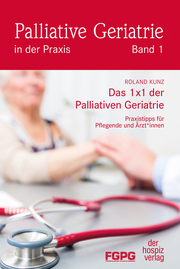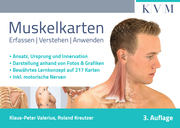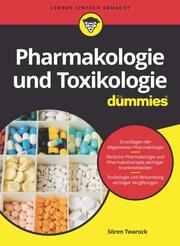Format: PDF
DRM: Adobe DRM
- Belletristik & Lyrik
- Krimi
- Kinder- und Jugendbuch
- Bilderbücher
- Familie
- E-Reader
- Hörbuch für Erwachsene
- Hörbuch für Kinder
- Reise
- Landkarten & Stadtpläne
- Kalender
- Politik & Wirtschaft
- Gesundheit
- Demenz
- Kochen
- Natur & Tiere
- Regionalia
- Körper und Seele
- Hobby & Basteln
- Humor & Nettigkeiten
- Geschichte & Kultur
- Schulbuch
- Lernhilfen
- Pädagogik
- Psychologie
- Partnerschaft & Erotik
- Fremdsprachige Literatur
- Theologie & Philosophie
- Fantasy & SciFi
- Lifestyle
- New Adult
- Influencer & Blogger
- Graphic Novel
- Manga
- Tickets
- Sprachen
- Biographien
- Sport
- Wissen
- Recht
- Beruf & Karriere
- EDV
- Fahrzeuge
„E-Book“ steht für digitales Buch. Um diese Art von Büchern lesen zu können, wird entweder eine spezielle Software für Computer, Tablets und Smartphones oder ein E-Book Reader benötigt. Da es verschiedene (Datei-)Formate für E-Books gibt, gilt es dabei einiges zu beachten.
Von uns werden digitale Bücher hauptsächlich in zwei Formaten ausgeliefert: EPUB und PDF. Je nach Verlag und Titel kann zu dem Format eine Form vom Kopierschutz (DRM=Digital Rights Management) gehören. Sie können Format und Form des DRM der Detailansicht des Titels entnehmen.
- Bei E-Books ohne DRM (DRM: Nicht vorhanden) müssen Sie lediglich sicherstellen, dass Ihr E-Book Reader, Software oder App das Format (EPUB oder PDF) öffnen kann.
- Der Kopierschutz per Digitalem Wasserzeichen (DRM: Digitales Wasserzeichen) speichert Daten zum Download des Buches direkt in der Datei, die ggf. gerichtlich ausgelesen werden können. Genau wie E-Books ohne DRM können diese Titel ohne Beschränkung kopiert und auf verschiedenen Geräten gespeichert werden, sind allerdings rückverfolgbar.
- Wenn ein Format mit "hartem" Kopierschutz gekoppelt ist (DRM: Adobe DRM), besteht zusätzlich die Notwendigkeit, dass Sie einen kostenlosen Adobe® Account besitzen (genannt Adobe® ID). Nach dem Kauf eines solchen Titels erhalten Sie per Download zunächst eine Übertragungsdatei (URLlink.acsm). Stellen Sie sicher, dass in Ihrer Software (z.B. Adobe® Digital Editions), Ihrer App oder in ihrem Reader die zuvor erwähnte Adobe ID (Ihre E-Mail-Adresse und Ihr Passwort) hinterlegt sind.
Beim ersten Öffnen der Übertragungsdatei im E-Book-Programm oder auf dem Reader wird das Buch untrennbar mit der Adobe ID verknüpft, mit der die Software / das Gerät angemeldet ist.
!! Sollte zu diesem Zeitpunkt keine ID angelegt sein, kann das E-Book nur auf diesem Gerät (Reader oder Computer) gelesen werden und nirgendwo sonst !!
Achten Sie bei der Übertragung von E-Books darauf, dass die selbe Adobe® ID benutzt wird, wie zum ersten Öffnen.
Da E-Books nur für eine begrenzte Zeit – in der Regel 6 Monate – herunterladbar sind, sollten Sie stets eine Sicherheitskopie auf einem Dauerspeicher (Festplatte, USB-Stick oder CD) vorsehen. Auch ist die Menge der Downloads häufig auf maximal 5 begrenzt.
Die Rückgabe von digitalen Inhalten ist technisch bedingt nicht möglich.
Dr Arthur PaynterAcknowledgements xiii1 Identifying Signs of Neuromotor Immaturity in Children and Adults 11.1 Introduction 11.2 How to use this Manual 21.3 Overview 31.4 Relationship between Neuromotor Immaturity and Learning Outcomes 4Literature review 41.5 Neuromotor Immaturity in Adolescents 61.6 Relevance of the INPP Screening Test to Health Practitioners 81.7 What is the INPP Method? 8Why assess posture and balance? 9Why carry out assessments for balance? 9What is the significance of static balance and dynamic balance to learning? 10What is the significance of postural control to learning? 10What is the link between primitive reflexes, balance and postural control? 111.8 How Does the Vestibular System Work? 111.9 Primitive Reflexes 12Why have these four reflexes been selected for evaluation? 121.10 What Evidence is there that Intervention in the Form of Movement Programmes Aimed at the Level of Primitive Reflexes Improves Reflex Status and Educational Outcomes? 181.11 What was known about Exercises to Inhibit Primitive Reflexes? When was the INPP Method Developed? What has been your Personal Experience Since then? 191.12 What is the Difference between the INPP Method, Sensory Integration (SI), Vojta Therapy, Bobath Therapy and Others Working with Primitive Reflexes? What are the Criteria for Referral to a Particular Therapy? 20The INPP method 20Sensory Integration (SI) therapy 21Vojta therapy 22Bobath therapy 261.13 What are the Top Five Medical Diagnoses Where Referral to INPP Should Routinely be considered After Checking the Reflexes by Clinicians? 271.14 Screening Tests 27How to use the screening test 28References 282 Screening Test for Use with Children 322.1 General Instructions 322.2 Scoring 322.3 Tests 33The Romberg test 34One-leg stand or Unipedal Stance Test (UPST) 37Tests for soft signs of neurological dysfunction: The Tandem and Fog walks 39The Tandem walk 40The Fog walk (1963) (walking on the outsides of the feet) 42Finger and thumb opposition test 442.4 Tests for Primitive Reflexes 46Asymmetrical Tonic Neck Reflex (ATNR) 46Test procedure: Ayres quadruped test for the ATNR 47Adapted HoffSchilder test for the ATNR (from seven years of age) 48The Symmetrical Tonic Neck Reflex (STNR) 50Tonic Labyrinthine Reflex (TLR): Erect test 52The Moro reflex 542.5 Sample Score Sheets 562.6 Sample Observation Sheets 572.7 Interpreting the Scores 58Children 58References 593 Neuromotor Immaturity in Adults 613.1 The Role of the Vestibular System and Its Connections 613.2 Historical Background to Links between VestibularCerebellar Dysfunction and Anxiety, Agoraphobia and Panic Disorder 643.3 Vestibular Dysfunction: Cause or Effect? 683.4 Rationale for a Somatogenic/Psychosomatic Basis to Some Anxiety Disorders 683.5 Postural Righting Reactions 71Labyrinthine Head Righting Reflexes (LHRRs) 713.6 The Moro Reflex: A Trigger for Panic? 723.7 How to Use the INPP Screening Test 743.8 The INPP Adult Screening Questionnaire 763.9 Interpreting the INPP Adult Screening Questionnaire 79References 804 INPP Screening Test for Signs of Neuromotor Immaturity in Adults 834.1 General Instructions 834.2 Scoring 834.3 Screening Tests for Use with Adults 834.4 Tests for Balance and Soft Signs of Neurological Dysfunction (ND) 844.5 Tests for Balance and Proprioception 86The Romberg test 86The Mann test (advanced Romberg test) 89The tandem walk 91The Fog walk (1963) (walking on the outsides of the feet) 934.6 Tests for Primitive Reflexes 95Asymmetrical Tonic Neck Reflex (ATNR) 95Ayres quadruped test for the ATNR 96Asymmetrical Tonic Neck Reflex adapted HoffSchilder (erect) test 97The Symmetrical Tonic Neck Reflex (STNR) 99Tonic Labyrinthine Reflex (TLR): Erect test 101Moro reflex 103Erect (drag) test for the Moro reflex 1054.7 Adult screening test 1074.8 Interpreting the scores 109References 110Resources 111Index 121
























